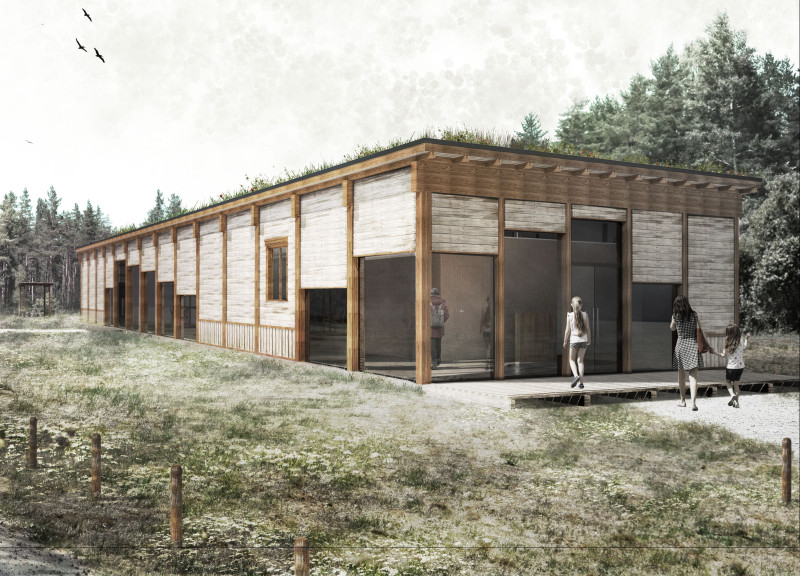5 key facts about this project
The Visitor Center design for Kemeri Park aims to connect visitors with the natural landscape of Latvia. Located among lush forests and diverse swamps, the center serves as a point of orientation and interaction for those exploring the area. The concept is centered on accessibility, guiding people from the parking area, through different spaces, and into the surrounding nature.
Architectural Layout
The site features a clear organization that includes essential components such as a car park, a playground, terraces, and the visitor center. Each element has been designed to support smooth movement and promote engagement. The open-plan layout of the visitor center encourages community interaction while accommodating areas for information, dining, and relaxation, enhancing the overall experience for visitors.
Cultural Integration
The design incorporates traditional Latvian architectural elements, weaving cultural context into its aesthetic. Features like varied cladding colors, specific window details, and projecting eaves reflect local styles. These elements help to create a visual connection between the building and its surroundings, grounding the center within its natural environment.
Sustainability Strategies
Sustainability is an important aspect of the design. A green roof helps manage rain and improves insulation, while solar panels assist in meeting the building’s energy needs. Natural ventilation is achieved through smartly placed skylights, reducing reliance on mechanical systems. These strategies are intended to work in harmony with the environment.
Materials and Construction
The choice of materials further supports the design's objectives. A glued timber frame provides structural strength and allows for quicker assembly. Concrete flooring offers thermal mass to help regulate temperature. Earth plaster serves as a low-maintenance finish, while wood fibre insulation improves energy efficiency. Large steel-framed windows let in plenty of natural light and provide views of the landscape, creating a direct link between the space inside and the outside world. The use of reclaimed wood for rustic formwork adds a unique character to the overall structure.



























